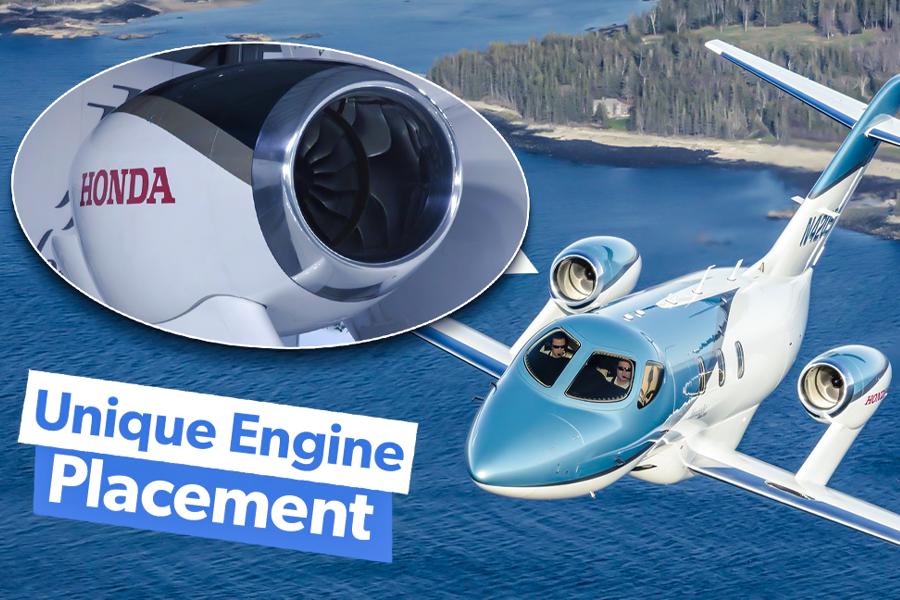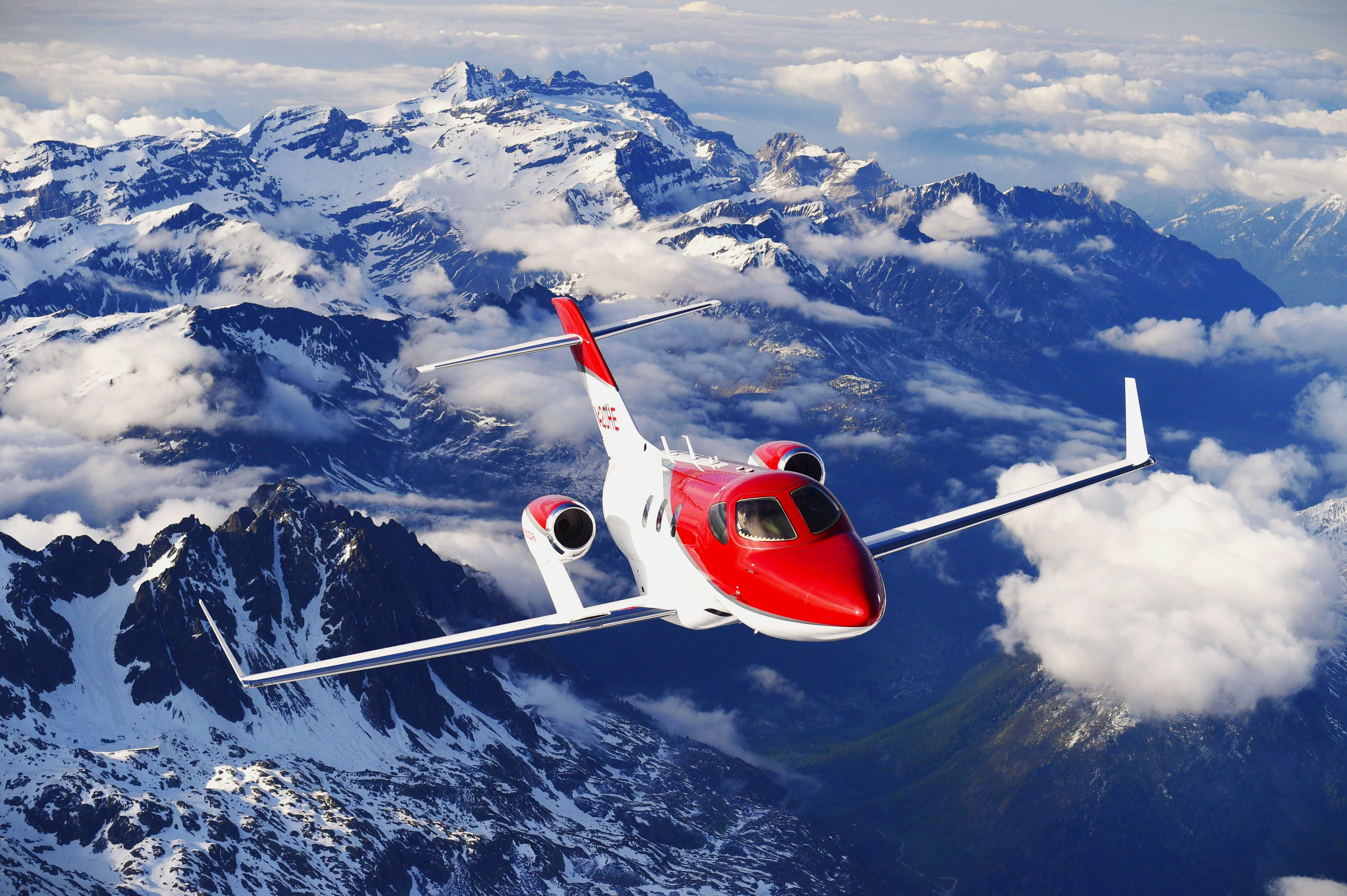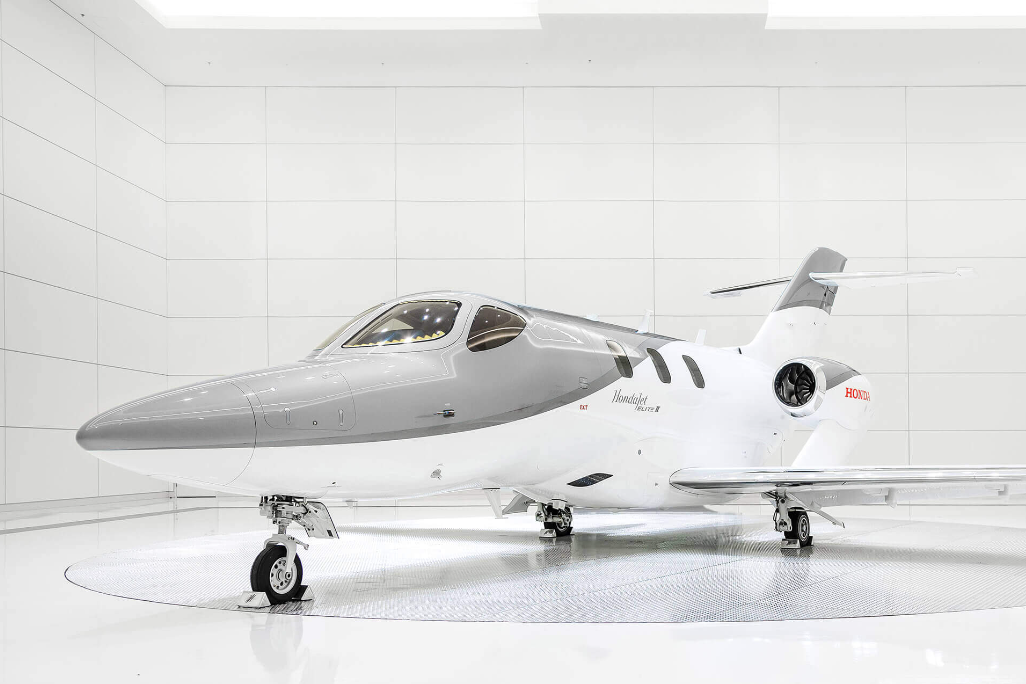The HondaJet is one of the most notable light business jets in the industry. Its development can be traced back to the late 1980s before the Honda Aircraft Company was even formed. Honda began researching new designs for a light business jet in the late 1980s before testing them at the Mississippi State University Raspet Flight Research Laboratory in the early 1990s. Eventually, the lead designer and head of the early research project, Michimasa Fujino, began designing the modern HondaJet. This concept was finalized in 1999.
However, Honda was not sold on the product, even after establishing a research facility at Piedmont Triad International Airport (GSO) in Greensboro, North Carolina. Testing continued for several years, and Honda Research and Development (R&D) Americas even built a flight-worthy aircraft that flew in late 2003. Fujino eventually displayed his creation at the EAA AirVenture airshow in Oshkosh, Wisconsin, in 2005. The show was a success, as onlookers were very interested in the new business jet. This event eventually led to Honda pushing to commercialize the type. It even led to the founding of Honda Aircraft Company, headquartered in Greensboro, North Carolina, to continue developing the business jet and begin production.
Years later, the Honda Aircraft Company revolutionized the business jet market with the introduction of the HondaJet. Since its introduction in 2015, the HondaJet has undergone several upgrades, including the newest variant, the HondaJet Elite II. Let’s take a closer look at the history of this unique aircraft and what specific characteristics make it so special.
Brief history
As mentioned previously, the original HondaJet was introduced in 2015, even though its story began much earlier. Honda decided to begin commercializing prototypes after the 2005 EAA AirVenture airshow. The public had such a positive response to the business jet that Honda formed Honda Aircraft Company to undertake this responsibility.
Honda Aircraft Company began production of a jet that completely conformed to Federal Aviation Administration (FAA) regulations; this aircraft flew for the first time in December 2010. Several years later, a production-ready prototype was built. This was due to the ongoing construction of manufacturing facilities at Piedmont Triad International Airport. These were completed in 2011, which meant that Honda Aircraft Company could complete the first production-ready jet, which flew for the first time in 2014.
Photo: David S Swierczek | Shutterstock.com
Shortly after that, in March 2015, the FAA awarded Honda Aircraft Company a type certificate for the original HondaJet. This business jet also received certification from the European Aviation Safety Agency (EASA) in May 2016. And after several years of production, Honda Aircraft Company introduced the HondaJet Elite. The new aircraft upgrade was introduced in May 2018, and its type certification was awarded that same month. Several upgrades were introduced including:
- Reduction in take-off roll
- Range increase
- Payload increase
- Maximum takeoff weight (MTOW) increase
- Certification for steep approaches
More recently, in October 2022, Honda Aircraft Company introduced the HondaJet Elite II. This saw several more advancements to the existing upgrades, including range increases, higher cruise speeds, a new paint scheme, and a redesigned interior. The aircraft also utilizes the upgraded G3000 Integrated Flight Deck.
Notable design features
The HondaJet Elite II has many of the same features as the original HondaJet. This very light business jet has a composite fuselage and an aluminum wing. It also features unique over-the-wing engine mounts, instead of using engine mounts on the tailcone or fuselage of the aircraft like most business jets.

Optimal Engine Placement: A Guide To The HondaJet’s Unique Engine Layout
Honda produces its aircraft with its engines over-the-wing.
The aircraft is also powered by two GE Honda HF120 turbofan engines. As the name suggests, these were developed as a joint venture between General Electric Aviation and Honda. Each of them provides the aircraft with over 2,000 pounds of thrust. These engines help the aircraft reach the following specifications:
|
Capacity |
Seven maximum passengers |
|---|---|
|
Length |
42 feet seven inches |
|
Height |
14 feet eleven inches |
|
Wingspan |
39 feet nine inches |
|
Maximum takeoff weight (MTOW) |
11,100 pounds |
|
Typical cruise speed |
422 knots (486 miles per hour) |
|
Range |
1,547 nautical miles (1,780 miles) |
|
Ceiling |
43,000 feet |
The HondaJet Elite II also utilizes the Garmin G3000 flight deck as its avionics system. Shortly after the aircraft was initially certified, Honda began offering autothrottles and the Garmin emergency autoland system on top of its basic flight deck. Other avionics upgrades include automated anti-ice systems, automated pressurization systems, automated ground spoilers, an advanced steering and augmentation system (ASAS), and a stabilized approach system.
Photo: HondaJet
Honda’s Elite II also came with a unique cabin upgrade. The type was developed with an immersive audio experience that allows sound to travel throughout the entire cabin. Other noise reduction systems, such as the engine placement, help the cabin maintain exceptional noise levels. The lavatory is also fully enclosed with ceiling skylights and external serviceability.
Operating costs and sale prices
When the HondaJet Elite II was first introduced in 2022, the aircraft was projected to sell for just under $7 million. Per Volato, the largest HondaJet operator, the Elite II typically sells for around $7.2 million, depending on what options are offered.
Per Liberty Jet, an annual budget for operating a HondaJet Elite II can range from $500,000 to just under $1 million. This is based on flying 200 or 400 hours per year. The budget includes the average fuel cost, which is set at $7.23 per gallon, maintenance costs, engine overhaul, and landing or handling costs. This estimation also includes fixed costs, like hangar rental, crew training, and insurance.







